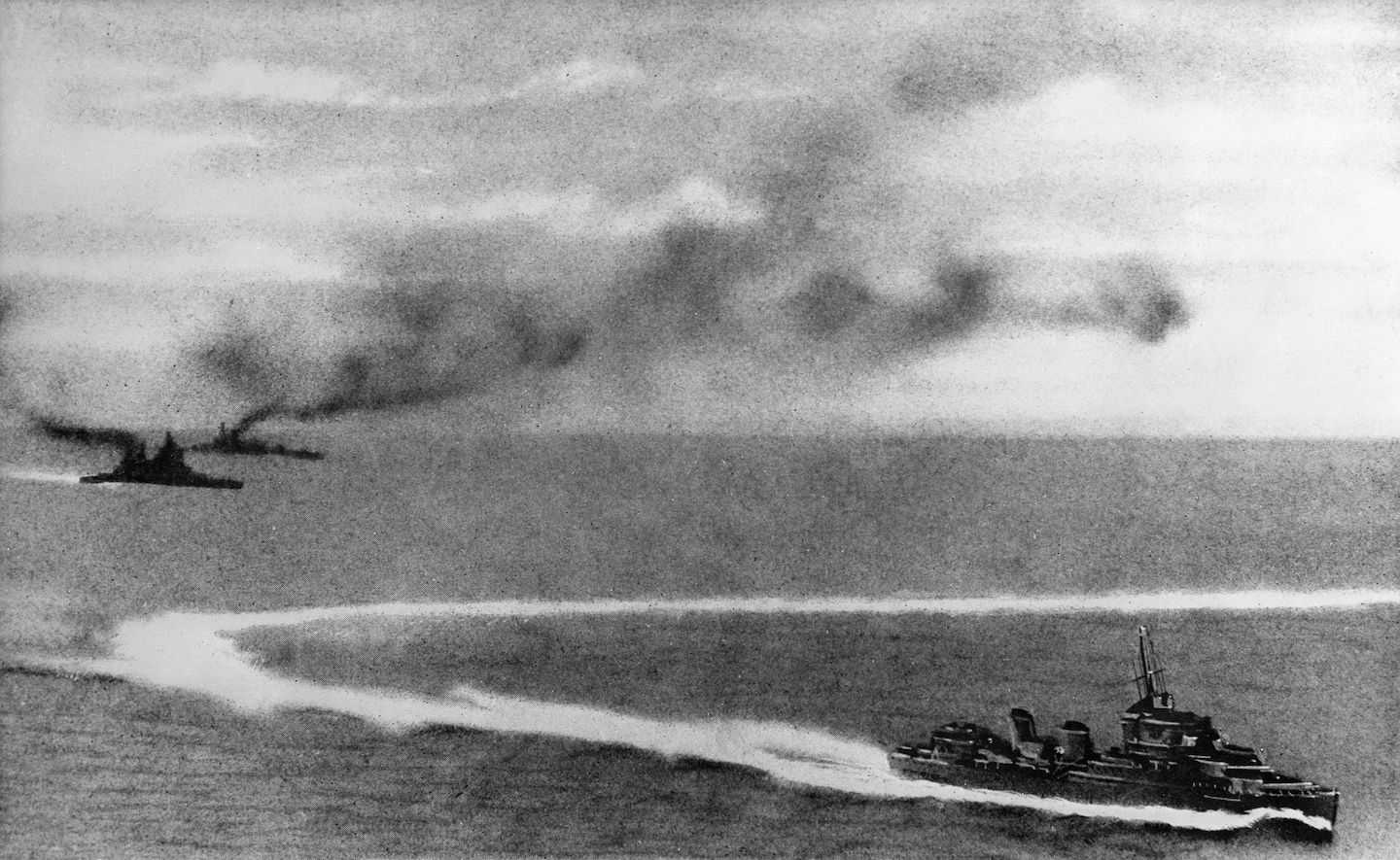Chinese vessel suspected of pillaging U.K. warships that sank in WWII
Listen 5 min Comment on this story Comment Gift Article Share
News of the sinking of the British Royal Navy warships HMS Prince of Wales and HMS Repulse by Japanese military pilots in the Pacific rippled around the world. It was Dec. 10, 1941, just days after the surprise attack on Pearl Harbor. Are you on Telegram? Subscribe to our channel for the latest updates on Russia’s war in Ukraine. ArrowRight Britain’s wartime prime minister, Winston Churchill, put down the receiver on his bedside telephone, grateful to be alone as he contemplated the enormity of one of the greatest disasters in British naval history. The sinking of the two warships confirmed Japan’s naval dominance in the South China Sea and left the British Empire’s Singapore-based eastern fleet without significant naval protection. Singapore was captured by the Japanese about three months later.
“There were no British or American capital ships in the Indian Ocean or the Pacific except the American survivors of Pearl Harbour, who were hastening back to California,” Churchill recalled in his postwar memoirs. “Over all this vast expanse of waters Japan was supreme, and we everywhere were weak and naked.”
Advertisement
This week, Malaysian authorities launched an investigation into a Chinese-registered cargo ship suspected of pillaging the shipwrecks — which are designated war graves for the 842 troops who perished there.
They detained the ship on Sunday, after it anchored without authorization about 20.1 nautical miles off Johor state in southern Malaysia. The vessel had 32 crew members onboard, including 21 Chinese nationals, 10 from Bangladesh and one Malaysian. It was registered to the port city of Fuzhou. An owner for the ship could not immediately be identified.
Officials from Malaysia’s Maritime Enforcement Agency said they found scrap metal and rusty cannon shells onboard that are suspected to be linked to unexploded artillery and other relics seized by police at a scrapyard earlier this month.
They are working with officials from Malaysia’s National Heritage Department to determine whether the shells found on the cargo ship date to World War II.
The Chinese Foreign Ministry said Tuesday that its embassy in Kuala Lumpur was in touch with Malaysian authorities, which it urged to “earnestly protect the security and lawful rights and interests of Chinese citizens and report the progress of the investigation in a timely manner.”
The incident raises questions about how to protect historic wreckage from looters. The National Museum of the Royal Navy is calling for a national plan to protect its approximately 5,000 naval wrecks around the world.
Advertisement
“We are distressed and concerned at the apparent vandalism for personal profit of HMS Prince of Wales and HMS Repulse,” Dominic Tweddle, the museum’s director general, said in a statement. “We are upset at the loss of naval heritage and the impact this has on the understanding of our Royal Navy history.”
The sunken warships contain a kind of steel sometimes coveted by salvagers because of its value to medical and scientific device makers. Known as low-background or prewar steel, it was produced before the first nuclear bombs were detonated, and it doesn’t contain the traces of nuclear fallout that can interfere with radiation-sensitive devices.
Marine experts at the U.K.-based Maritime Archaeology Sea Trust (MAST) estimate that the value of the raw materials taken off the HMS Prince of Wales was at least $4 million — even if they were sold locally as scrap metal. Relics made of copper or bronze such as the propellers and engine components “are worth a lot more and may have been the real target,” senior archaeologist Giles Richardson said in an email.
Advertisement
Maritime sleuths were tipped off by local fishermen after the ship was spotted in the area around the wrecks earlier this month. The marine archaeologists at MAST suspect the Chinese cargo ship may have been operating undetected for as long as five months.
Using satellite and maritime vessel tracking, they pieced together what they described as a “sustained campaign of destruction” at the site of the HMS Prince of Wales wreck starting in December. The ship returned to the area six times, spending about 54 days total at the site and using its double cranes to wrench material from the wreck, Richardson said.
It was also seen unloading scrap at a yard in Kampung Belungkor, near Singapore, where piles of unexploded shells and bullets were later found. A vast oil slick about six miles long was released during the alleged months-long pillage, he said.
Richardson said the Chinese cargo ship probably concealed its activities from authorities by “spoofing” its location on the Automatic Identification System, a transponder network created in the 1990s to keep large tankers from colliding.
Advertisement
These signals are usually picked up by satellites and land-based receivers. But boats sometimes hide their signals, The Washington Post has reported.
“We have evidence [the cargo ship] routinely turned off the AIS transponder when leaving port. This made tracking its movements a lot harder, especially on offshore sites like Prince of Wales and Repulse which are far out of sight of land,” Richardson said.
He said the ship passed through busy shipping lanes four or five times, brazenly carrying the historic wreckage on its open deck, without coming to the attention of port inspectors.
It isn’t the first time the Chinese-flagged cargo ship has targeted World War II wrecks in the area, Richardson said. The recently detained ship, he said, was one of a number of salvage operators that struck perhaps dozens of sunken warships in the Java Sea between 2012 and 2017 belonging to Western and Japanese navies before Malaysian and Indonesian officials clamped down in response to a global outcry. He said it is the first ship known to have returned to the area, however.
“We hope this seizure will bring such repugnant activities to an end and stop history repeating itself,” Richardson said.
GiftOutline Gift Article
Source: The Washington Post


